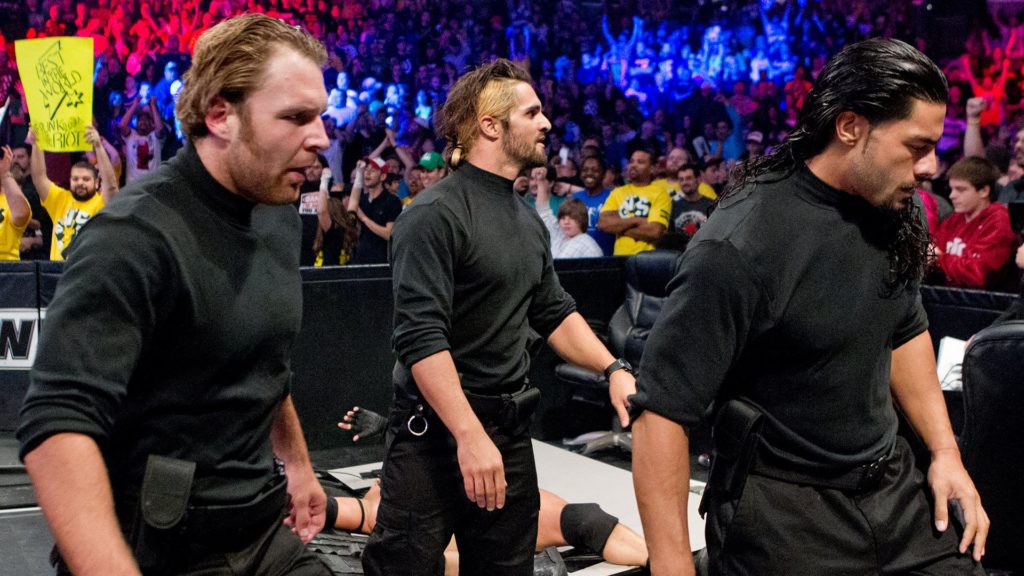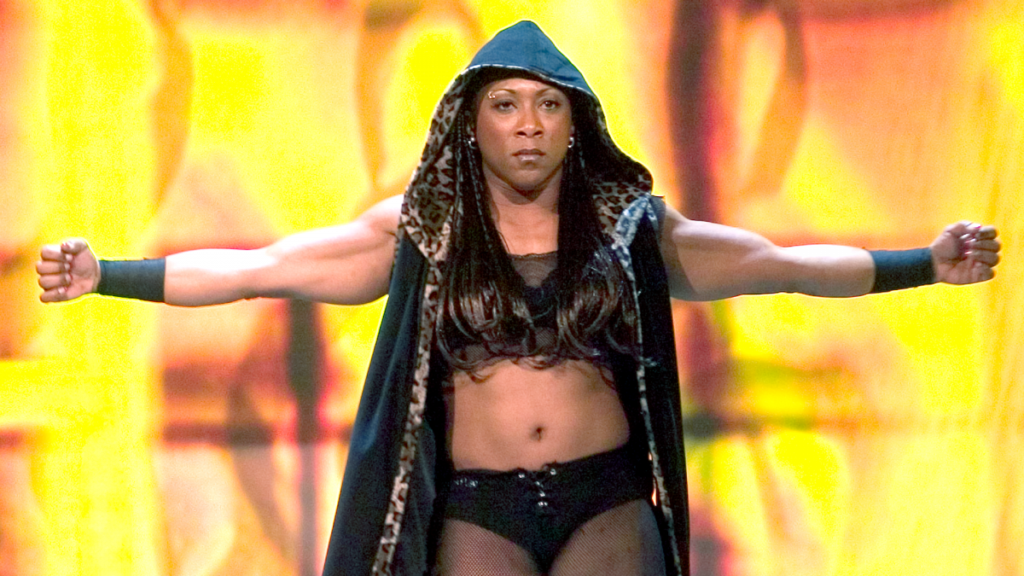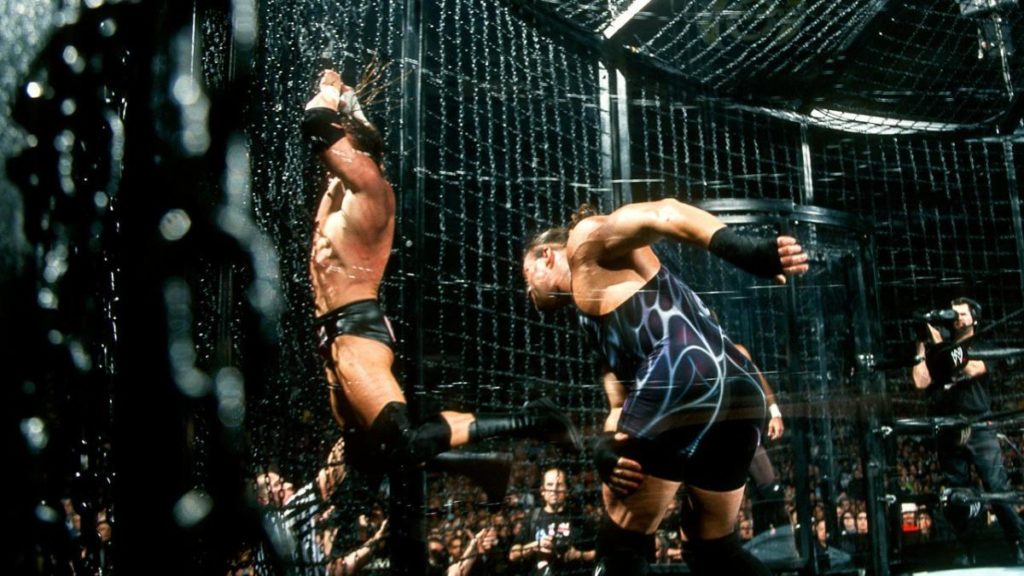Survivor Series: Biggest Debuts

When does the holiday season truly begin? The day after Halloween? Thanksgiving? Dec. 1? All good choices, but here’s the definitive answer: With WWE’s Survivor Series, of course, which traditionally takes place the Sunday before Thanksgiving.
Along with being WWE’s second longest-running annual event after WrestleMania, Survivor Series is best known for its signature elimination tag team matches. But its secret superpower is hosting scads of the biggest debuts in WWE history, with some of the biggest names in pro wrestling making their first appearance at the November show.
The Undertaker
Largely, the wrestlers who performed at WWF Survivor Series 1990 are legends from a bygone era of professional wrestling—names like The Ultimate Warrior, The Legion of Doom, and Jake “The Snake” Roberts. After all, it was twenty-eight years ago. Yet, one is not only still active, he just wrestled in the main event of WWE Crown Jewel less than a week ago: The Undertaker.
But even Phenoms have to start somewhere. After a mostly forgettable run in WCW as “Mean” Mark Callous, The Undertaker debuted at Survivor Series 1990 (the last one to take place on Thanksgiving Day itself) as the mystery member of Ted DiBiase’s Million Dollar Team. Accompanied by Brother Love (future podcast superstar Bruce Prichard), Undertaker arrived in WWF for the first time, wearing gear that honestly kind of looked like homemade cosplay of a modern-day Undertaker costume.
He made an immediate impact against Dusty Rhodes’ Dream Team, quickly pinning Koko B. Ware with a tombstone piledriver to score the first elimination of the match. The Undertaker went on to pin Rhodes himself with a
Survivor Series has proven to be a lucky show for The Undertaker—a year later, he beat Hulk Hogan at the show to win his first WWF Championship. (He also lost to Vince McMahon in a Buried Alive match at Survivor Series 2003, proving eventually luck runs out, even for “The Deadman.”)
Kurt Angle
More than 18 years before Kurt Angle teamed with Ronda Rousey at WrestleMania 34, the Olympic gold medalist made his in-ring WWF debut at Survivor Series 1999, in a back-and-forth singles match against the since-retired Shawn Stasiak.
Looking back at Angle’s debut, two things stand out: the excellent subtle heel work in having Howard Finkel announce him as “the most celebrated real athlete in WWF history” and just how jarring it is now to see Angle with hair. Before Angle’s in-ring debut, several video packages cast him as not quite the patriotic hero fans might have expected but instead an entitled overachiever with a superiority complex over pro wrestlers.
Despite being still in the formative stage of Angle’s transition from amateur wrestling to sports entertainment, many recognizable elements were there from the start—including winning with the then-unnamed Angle Slam, entering to his iconic music, and performing comedic character work as he got on the mic to complain that the fans dared to boo an Olympic hero.
Last year, Angle returned to Survivor Series as the captain of Team RAW, leading his squad to victory against Team SmackDown (and saving his constantly-threatened RAW General Manager job in the process).
The Rock
In one of history’s greatest instances of “if at first you don’t succeed,” The Rock—technically “Rocky Maivia”—made his WWF in-ring debut at Survivor Series 1996. And it was… not very good.
Rocky Maivia—a name paying tribute to his dad, Rocky Johnson, and his grandfather, Peter Maivia—teamed with Jake Roberts, Marc Mero, and The Stalker against The Rock’s future rival, Hunter Hearst Helmsley, plus Crush, Goldust, and Jerry Lawler. Lacking the swagger and edge that makes The Rock “The Rock,” Rocky Maivia entered Survivor Series 1996 as a generic, smiley, hand-slapping good guy, with a goofy green-and-blue fringed outfit. It didn’t help that the commentary team tried to force him down the fans’ throats: “That’s going to be the man right there,” Jim Ross
It’s admirable that WWE clearly saw The Rock’s undeniable talent even if the packaging was all wrong. He ended up as the “sole survivor” of the match, pinning his final two opponents consecutively. But a cookie-cutter babyface wouldn’t do in the era of “Stone Cold” Steve Austin, and in less than a year, Rocky Maivia would become “The Rock.” With that, one of the very biggest stars in pro wrestling (and eventually Hollywood) was born.
The Shield
Roman Reigns, Seth Rollins, and Dean Ambrose have not only individually established themselves as three of the pillars of contemporary WWE
It was Survivor Series 2012 where Reigns, Rollins, and Ambrose made a memorable jump from NXT by interfering in the triple threat match between WWE Champion CM Punk and challengers John Cena and Ryback. Appearing at the climax of the show, The Shield came from the crowd and swarmed Ryback as he looked close to capturing the championship—and sent him through an announce table with their trademark Triple Powerbomb, assuring CM Punk would retain but still keeping their motivations a mystery.
Though their outfits weren’t quite the tactical gear they came to embrace—instead ill-advised turtlenecks they’ve since disavowed—there’s no doubt The Shield debuted virtually fully-formed, as a disruptive force creating a uniquely compelling form of chaos. It was one of the most buzzed-about debuts in years, with WWE defying expectations by debuting three relative unknowns simultaneously, without any prior build-up, and immediately placing them in a main event-level position. (Looks like that was the right move.)
Jazz

In 2001, women’s wrestling in WWF was more about eye candy than athletic performance, despite the many talented female members of the division. Survivor Series 2001 featured a “Six-Pack Challenge” for the WWF Women’s Championship between six of the best—Trish Stratus, Lita, Jacqueline, Ivory, Molly Holly (then known as Mighty Molly), and, making her WWF debut, Jazz.
Jazz was previously known as one of the more rough-and-tumble members of the very rough-and-tumble ECW roster, taking on men more frequently than women. Explicitly more about being tough than looking pretty, Jazz immediately stood out among the women in WWF.
Though she didn’t come out on top at Survivor Series 2001—and the match only lasted a little more than four minutes, as was unfortunately common for WWF women’s matches at the time—Jazz went on to become a two-time WWE Women’s Champion. She’s active to this day, as the current NWA World Women’s Champion.
Elimination Chamber
It’s not just people who have made their debut at Survivor Series: One giant circular steel cage also has this pay-per-view origin story.

While the Elimination Chamber has been its own annual WWE event since 2010, it was introduced at Survivor Series 2002, as the next evolution of the Hell in a Cell structure that debuted five years earlier. (Think: normal cage, Charmander; Hell in a Cell, Charmeleon; Elimination Chamber, Charizard.)
The first match included six of the biggest stars of the era, with Triple H defending the World Heavyweight Championship against Booker T, Chris Jericho, Kane, Rob Van Dam, and Shawn Michaels, who had just returned from a four-year hiatus three months earlier. Despite taking a beating best described as hellacious—including being catapulted into the glass pod by Triple H—Michaels won the match, his first world championship in years and the final one of his career.
Though only the first Elimination Chamber happened at a Survivor Series event, the match itself has become a hallmark of the WWE calendar. A total of 22 have taken place thus far, including the first-ever women’s Elimination Chamber earlier this year.
With Survivor Series 2018 taking place November 18 on the WWE Network, keep reading for much more about the event.